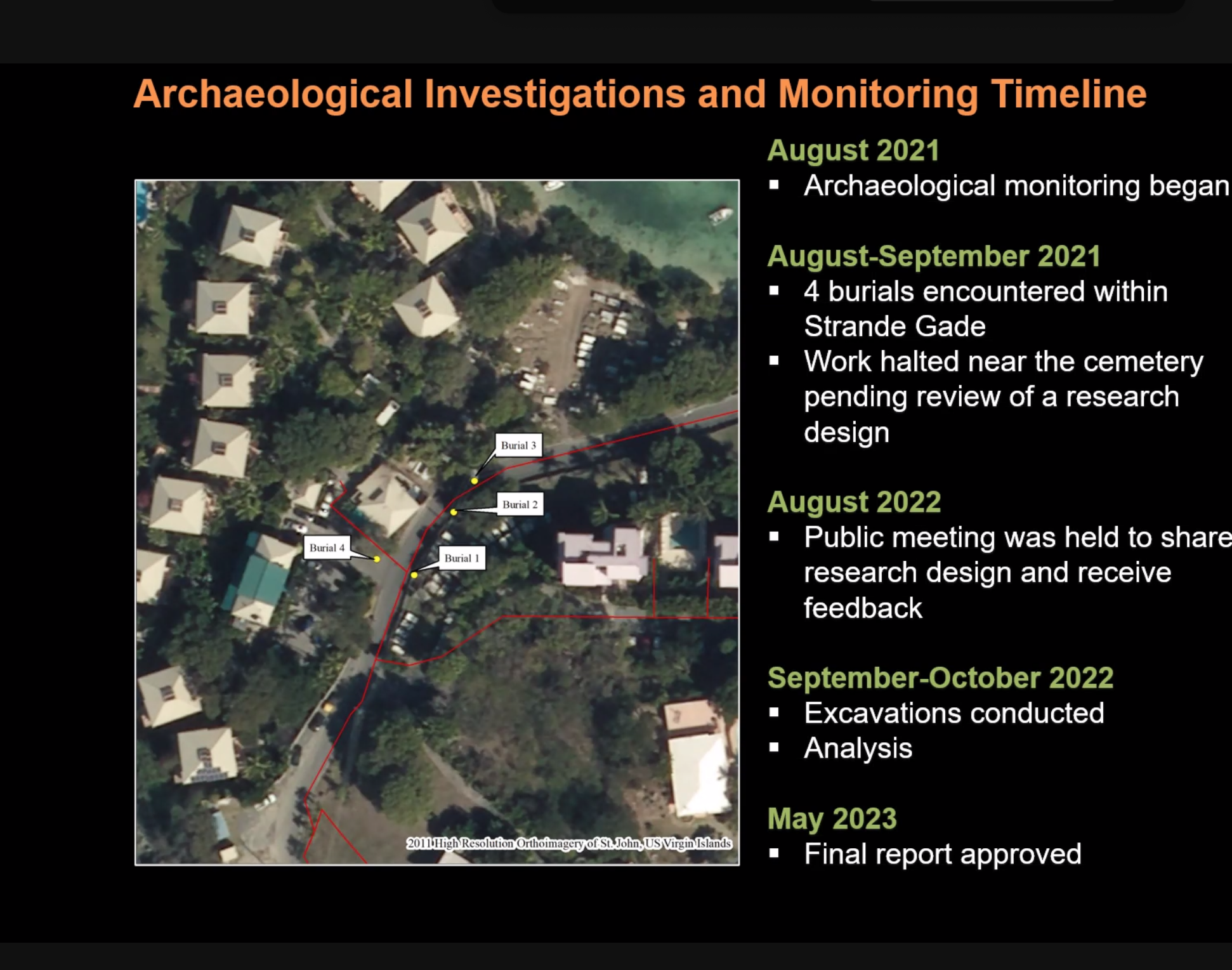
The government of the Virgin Islands will hold a public ceremony on Aug. 7 from 3 to 5 p.m. to rebury the remains of five individuals that were unearthed during road work near the Cruz Bay Cemetery in August 2021.
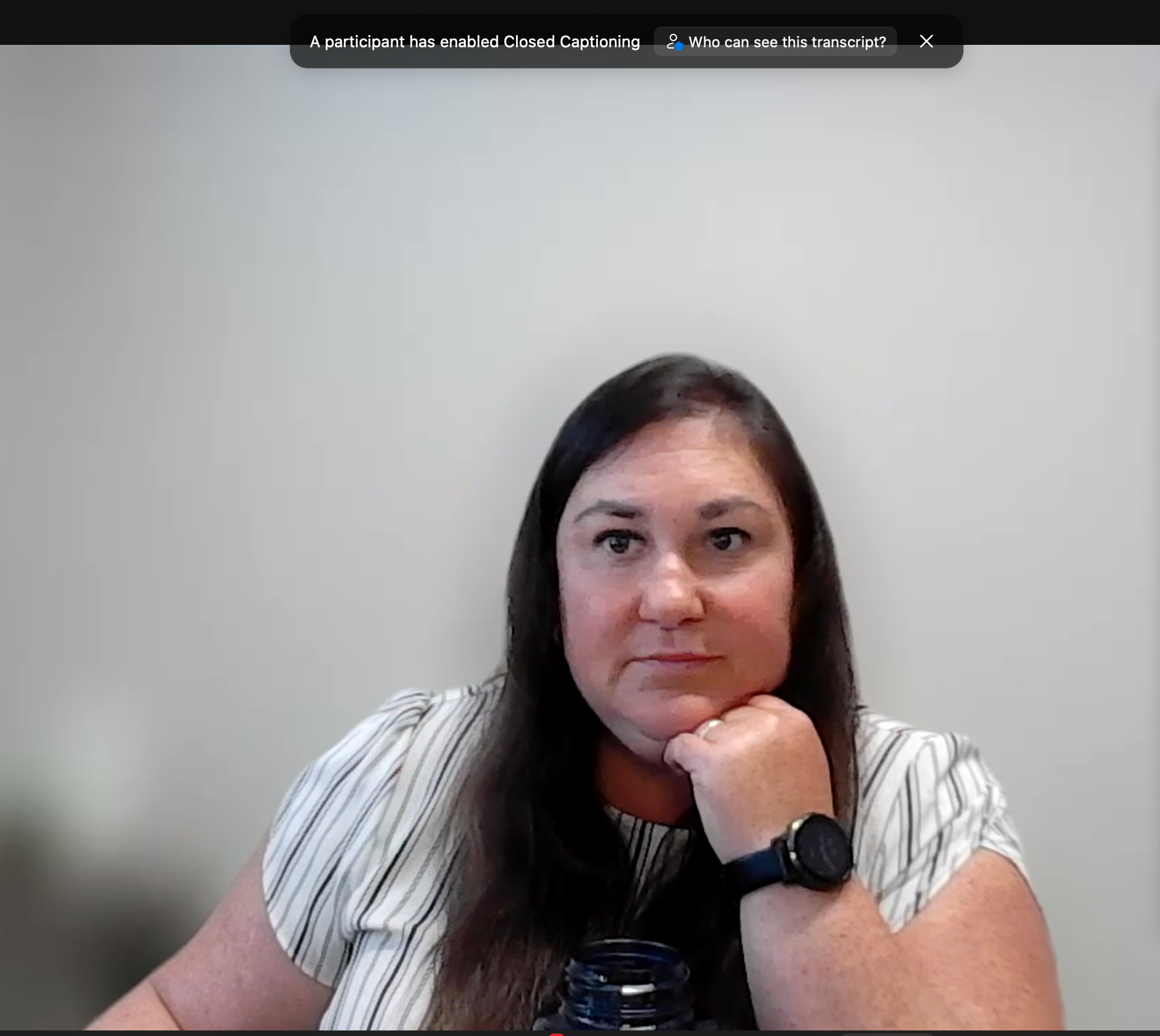
A new monument is being prepared for placement of the remains in the lower part of the cemetery at the site of an abandoned crypt, according to Brooke Persons, an archaeologist who has headed up a team from the University of Tennessee’s Chattanooga and Knoxville campuses.
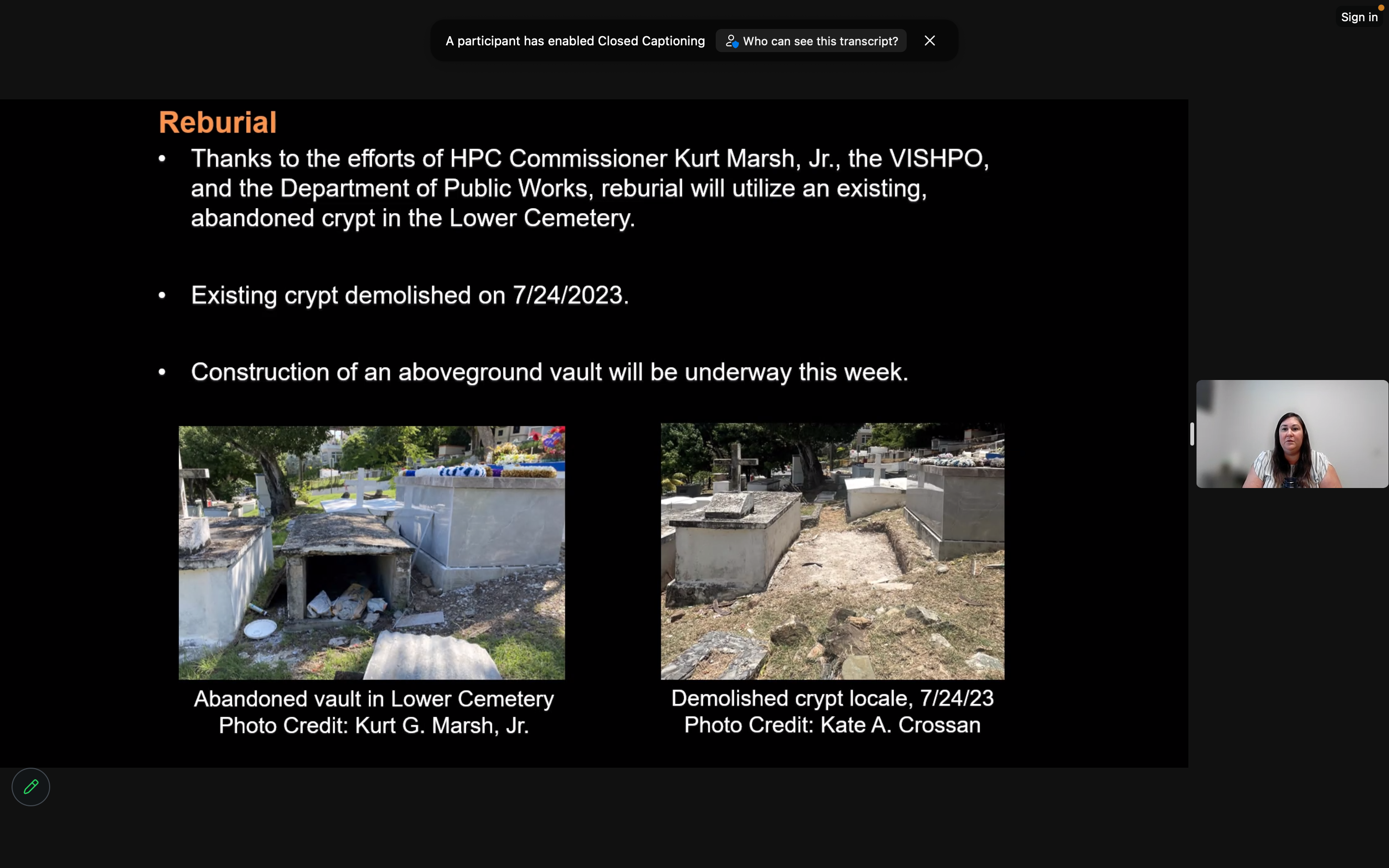
The remains were discovered when a contractor for the Water and Power Authority was digging a trench to bury cables and other equipment as part of the “WAPA Underground” project funded by FEMA to protect the electrical grid during storms.
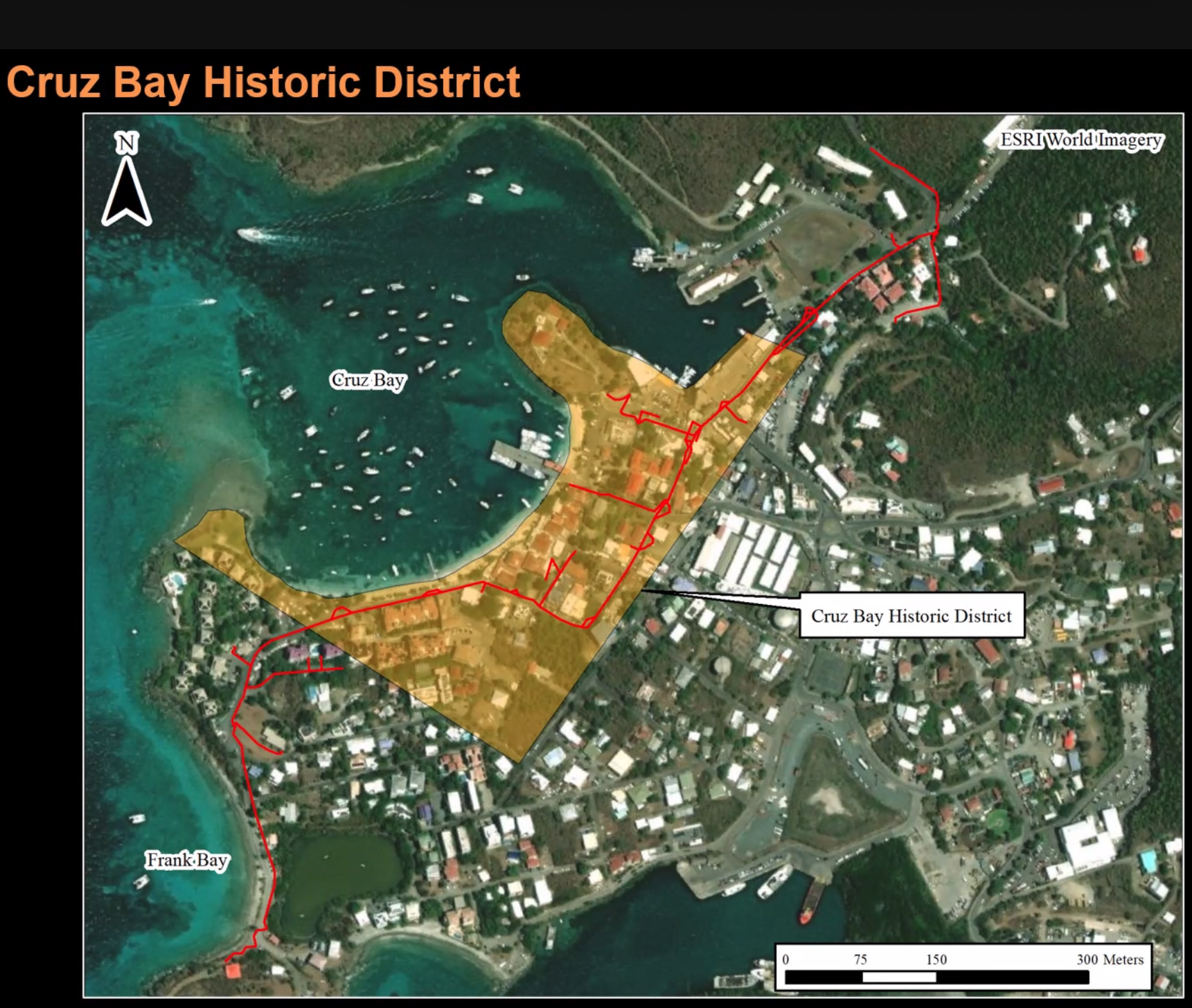
Because the road being excavated was within the Cruz Bay Historic District – and had cut straight through the cemetery which had been in steady use since the 1890s – federal mandates required that archaeologists be on-site during the excavation.
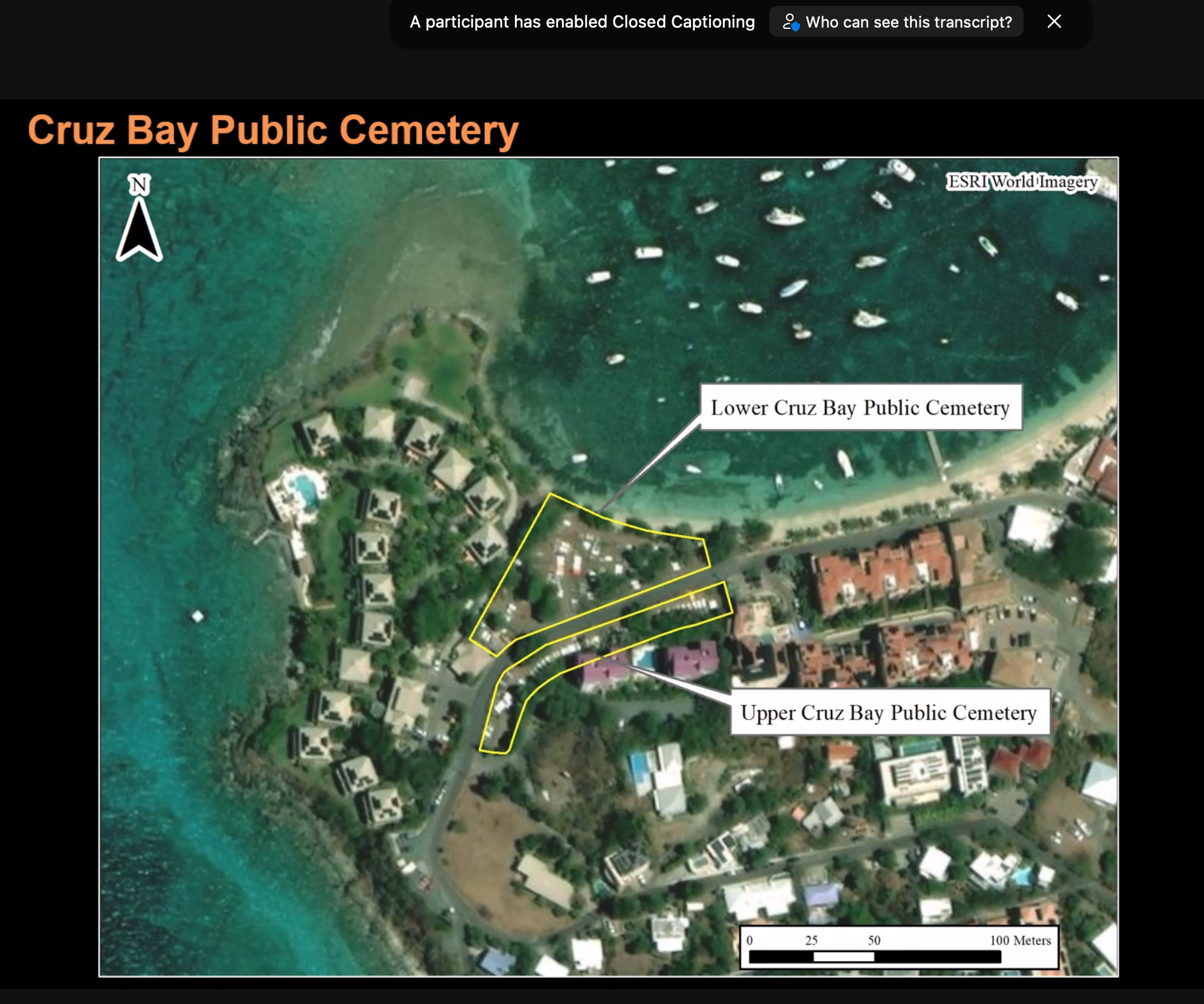
Persons described how the remains were found and what archaeologists were able to learn about the five individuals during an online public meeting hosted by FEMA on July 27. Nearly 40 people tuned in to the meeting.
WAPA contractors had 433 feet of trenches to dig when the first skeleton was discovered in Aug. 2021. Work was temporarily halted, then four more skeletons were found at three more sites as work continued.
Although archaeologists were not able to discover the names of any of the individuals, in most cases archaeologists were able to determine the sex and the approximate ages of the individuals by using observational studies and evaluating “associated personal belongings.” No invasive techniques were used.
In general, the bodies were laid to rest in an east-west orientation, a typically European practice in the 19th century.
At the site known as Burial 1, one body was found, that of an adult male thought to be between 35 and 59 years old. Also found were cut iron nails and wood fragments, suggesting that he had been buried in a coffin. Bone buttons were also discovered at the site.
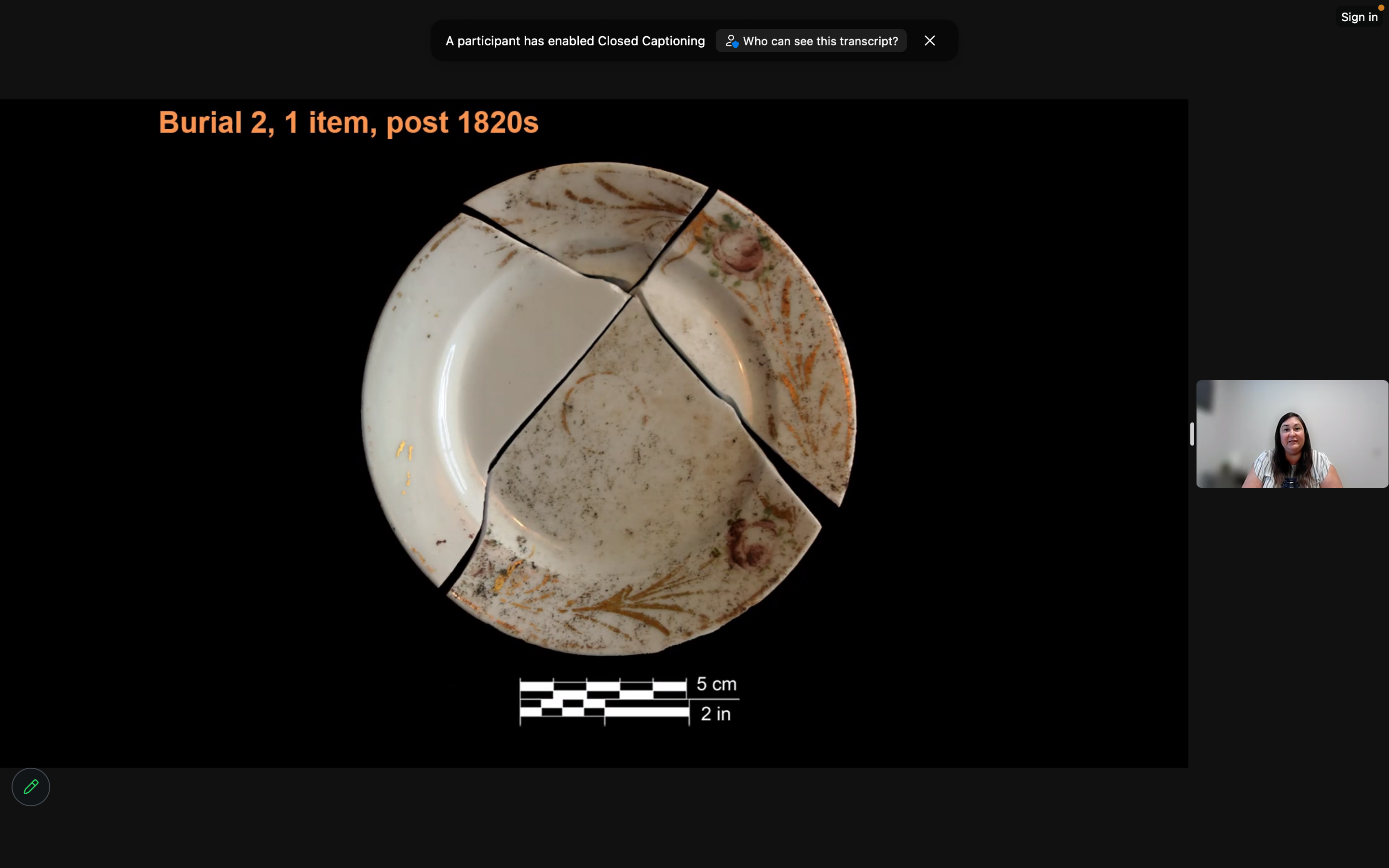
Burial 2 contained the remains of two bodies, but no age range, sex, ancestry, or stature could be determined. Archaeologists couldn’t tell whether a hand-painted saucer found nearby was related, but they noted that it was a common practice among people who descended from Africa to bury the object last touched by the deceased along with the body.
Burial 3 contained the remains of a female, ages 45 to 49, who was buried in a hexagonal wooden coffin sometime between 1850 and 1900. An array of 58 brass tacks – used either to decorate the coffin or hold the liner fabric in place – were also found.

The individual in Burial 4 was thought to be a male in his fifties, possibly of African American descent, who had spinal abnormalities. The 48 objects found nearby included cut iron nails, and a range of buttons made of bone, shell, and ceramic suggested that he had been buried in layers of clothing, perhaps his “Sunday best.”
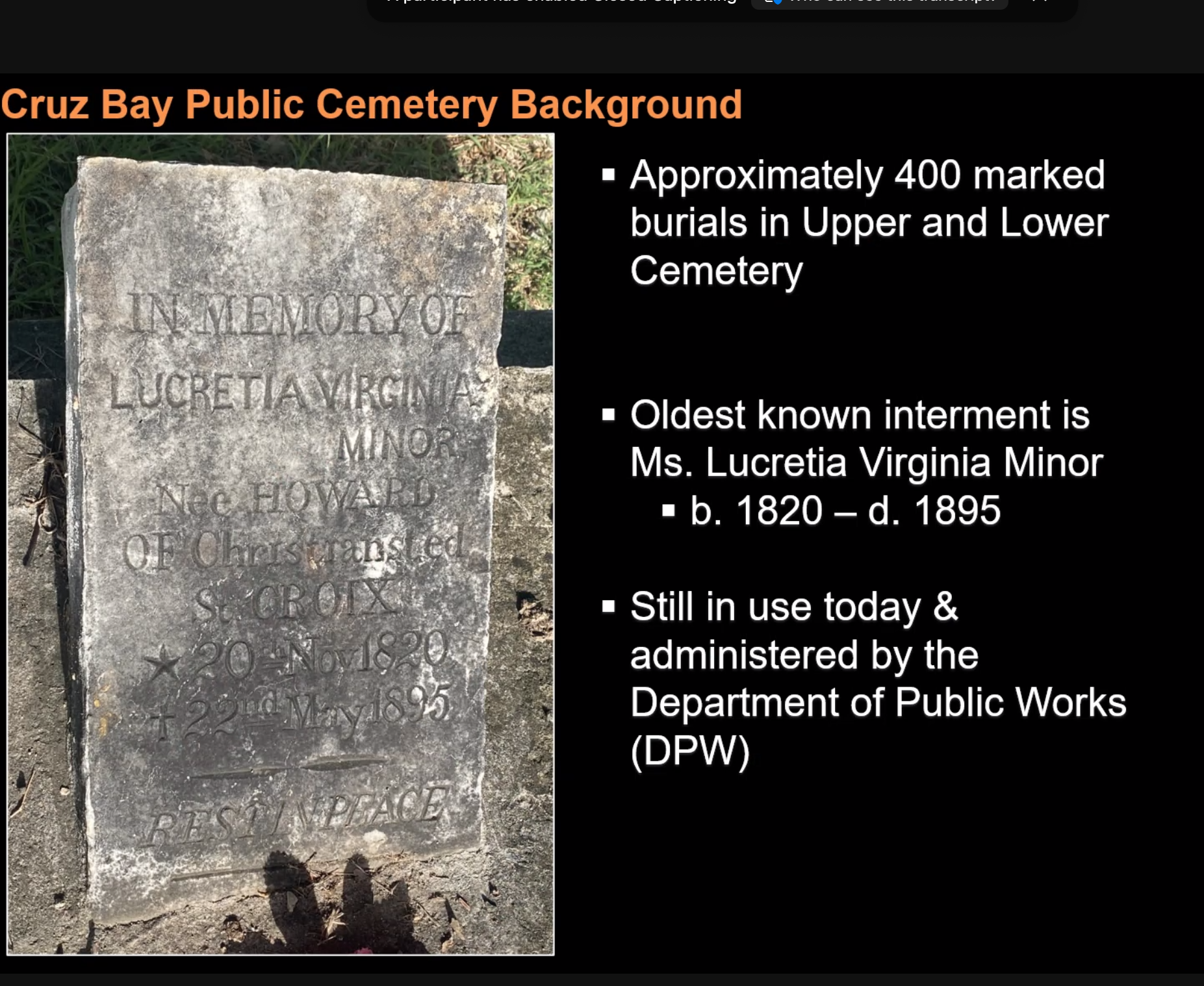
The Cruz Bay Cemetery contains 180 marked and 120 unmarked graves in the lower section and 180 marked burials in the upper section. The oldest known grave marker belongs to Lucretia Virginia Minor (1820 – 1895.)
It is known that individuals were laid to rest at Gallows Point – the site of the cemetery – as early as 1829, but their identities are not known. At that time, most of the island’s inhabitants were buried on estate land – at segregated sites – or in churchyards and private family properties.
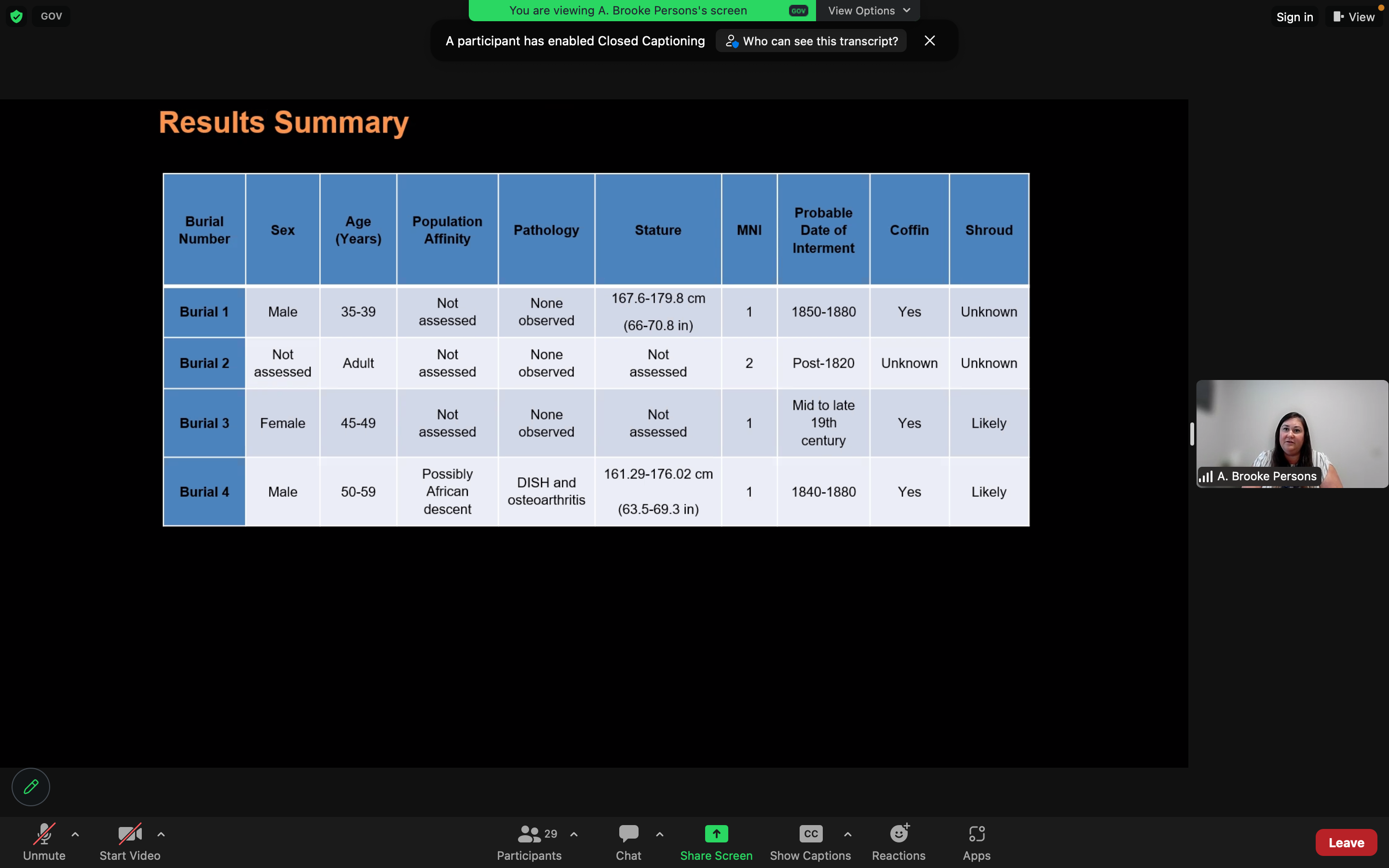
Persons said those who were buried at Gallows Point may have been individuals who were executed, but they might also have been travelers, mariners, military personnel, or members of religious minorities.
In the mid to late 1800s, the residents of St. John coped with a series of lethal events, including a cholera epidemic, two major hurricanes, and a tsunami, so it was logical to see the growth of the cemetery during this time, Persons said.
On Aug. 7, each of the remains of the five individuals will be wrapped in muslin and reinterred in a masonry monument with a hip roof. A bronze plaque honoring the five unknown individuals will be forthcoming.
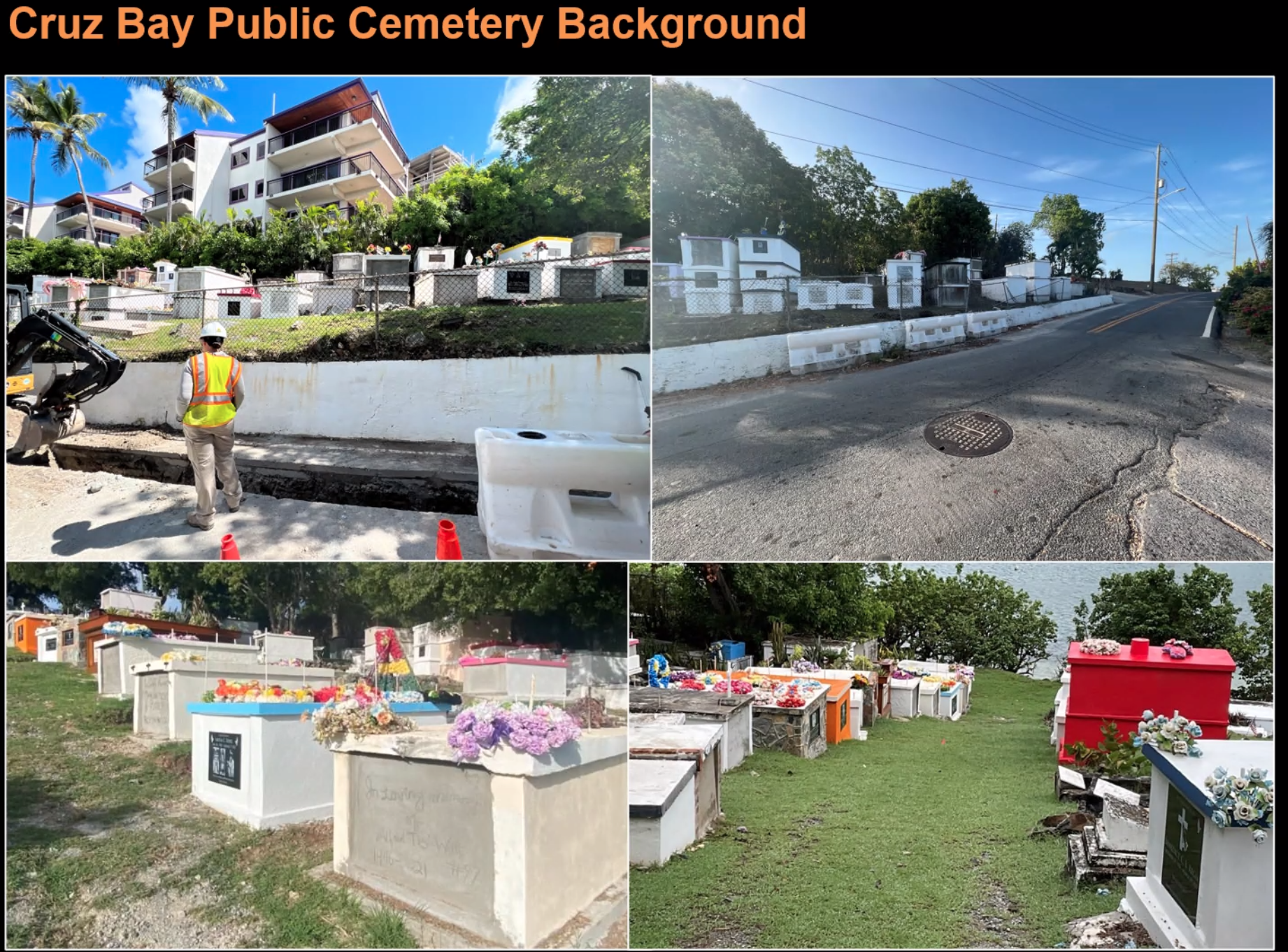
Those interested in downloading the archaeologists’ report may use this link. https://scholar.utc.edu/archaeology-reports/80/.


